

Part II: Salt Tectonics Interpretation Workshop associated with Salt
C) Pattern Recognition & Interpretation of Seismic Slice Data
C.1- Geological Legend for Time Slices
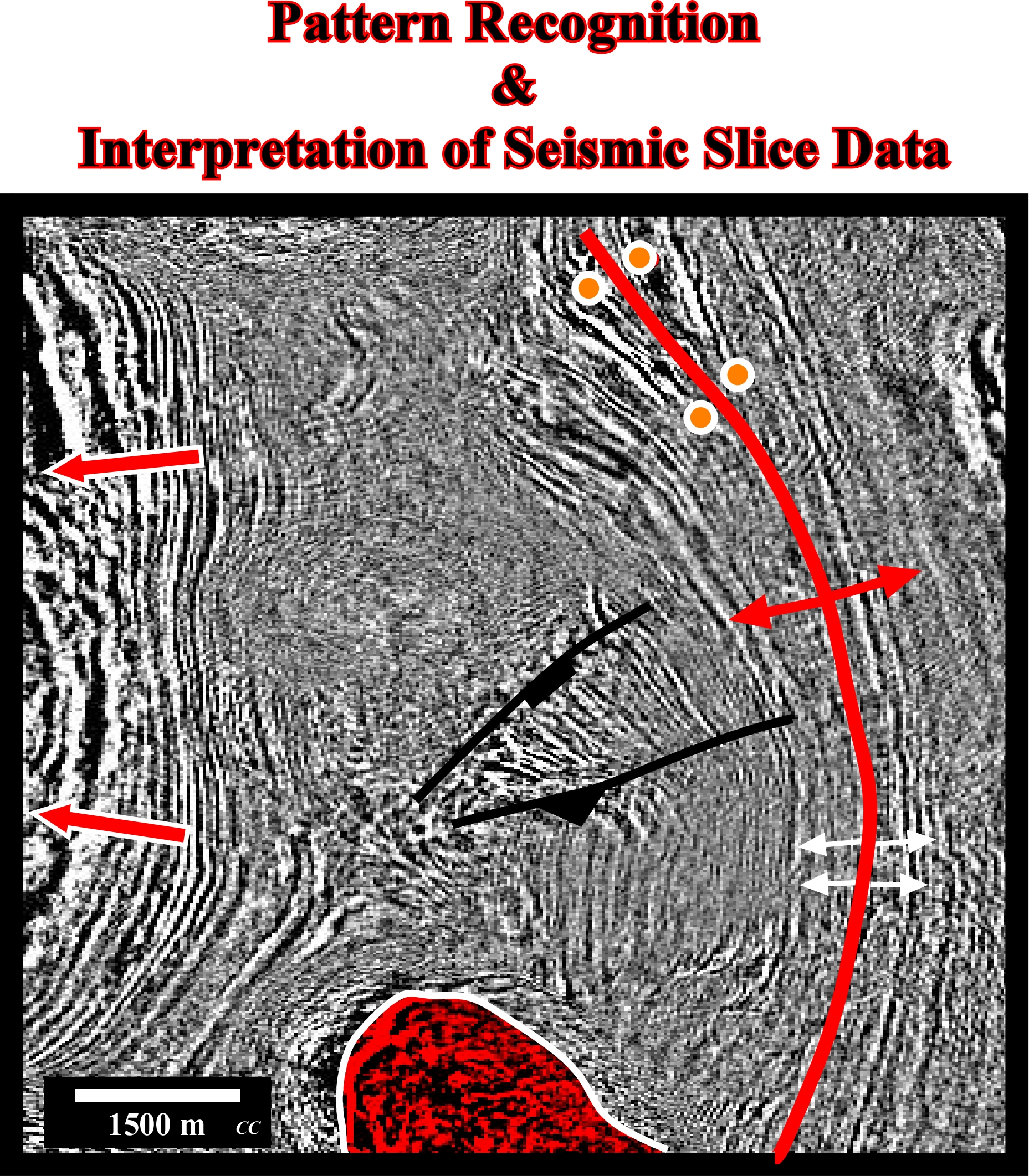
Fig. 331 - The legend of this tentative geological interpretations of a time slice of the Angola deep offshore is illustrated on the next figure.
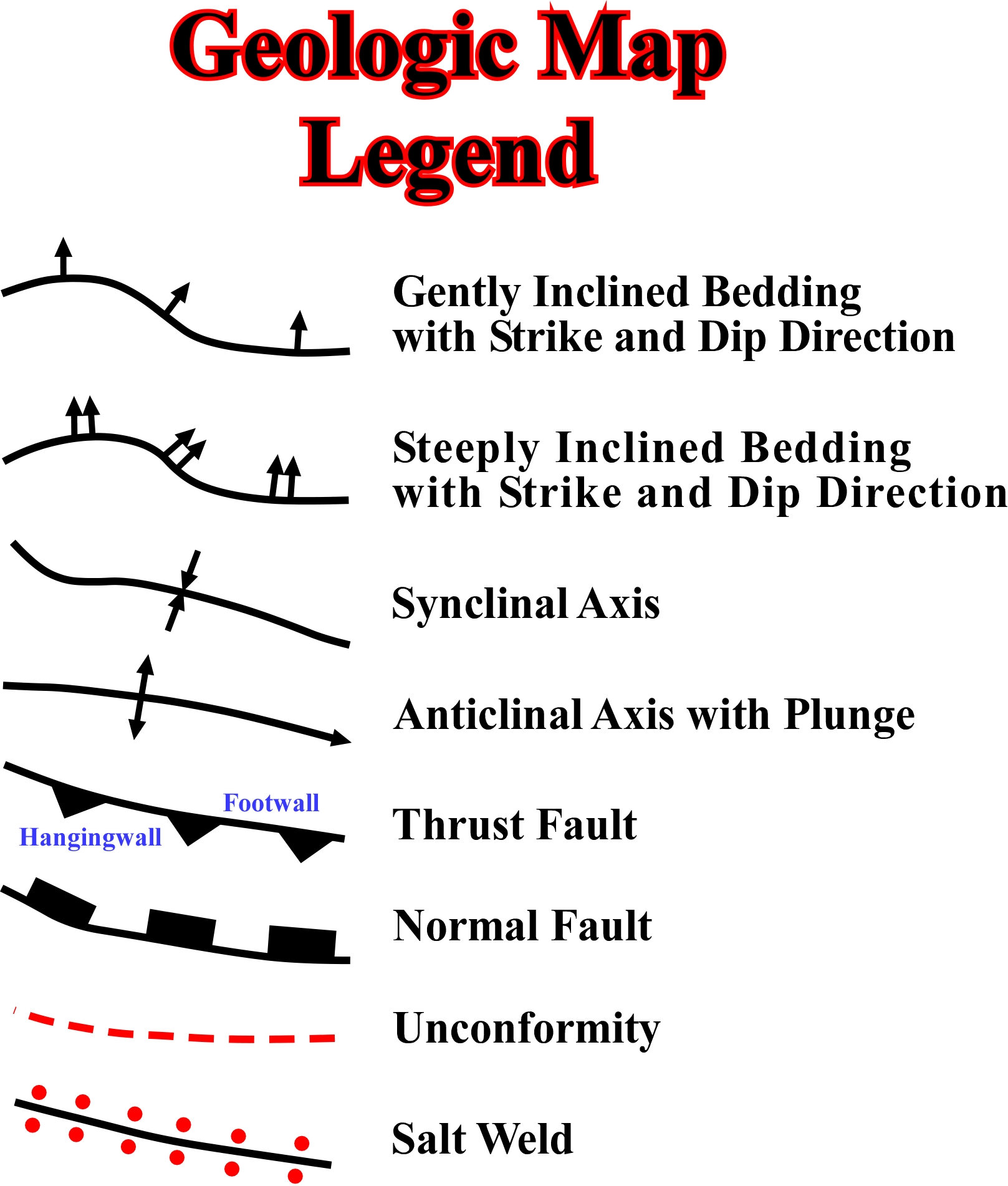
Fig. 332 - Since the paper "Raft Tectonics in Kwanza Basin, Angola" (B. Duval, C.Cramez & M. P.A. Jackson, 1992) salt welds are portrayed on tentative seismic interpretations by a line (tectonic disharmony ) with equidistant circles above and below. All other legends are conventional, except for a) Gently inclined bedding with strike and dip direction (one arrow) and b) Steeply inclined bedding with strike and dip direction (two arrow).
C.2- Seismic Slice Pattern Recognition
Much like in seismic stratigraphy, certain patterns can be diagnostic in interpreting seismic slices. Features such as synclines, synforms, anticlines, antiforms faults, unconformities, curved fold axes, allochthonous salt, etc., can be, readily, identified and interpreted on these slices, just as they can on surface geologic maps. The advantage to the seismic slice is that there is no topographic distortion. Additionally, since these slices are extracted from 3D data sets, profiles are available to verify the interpretation.
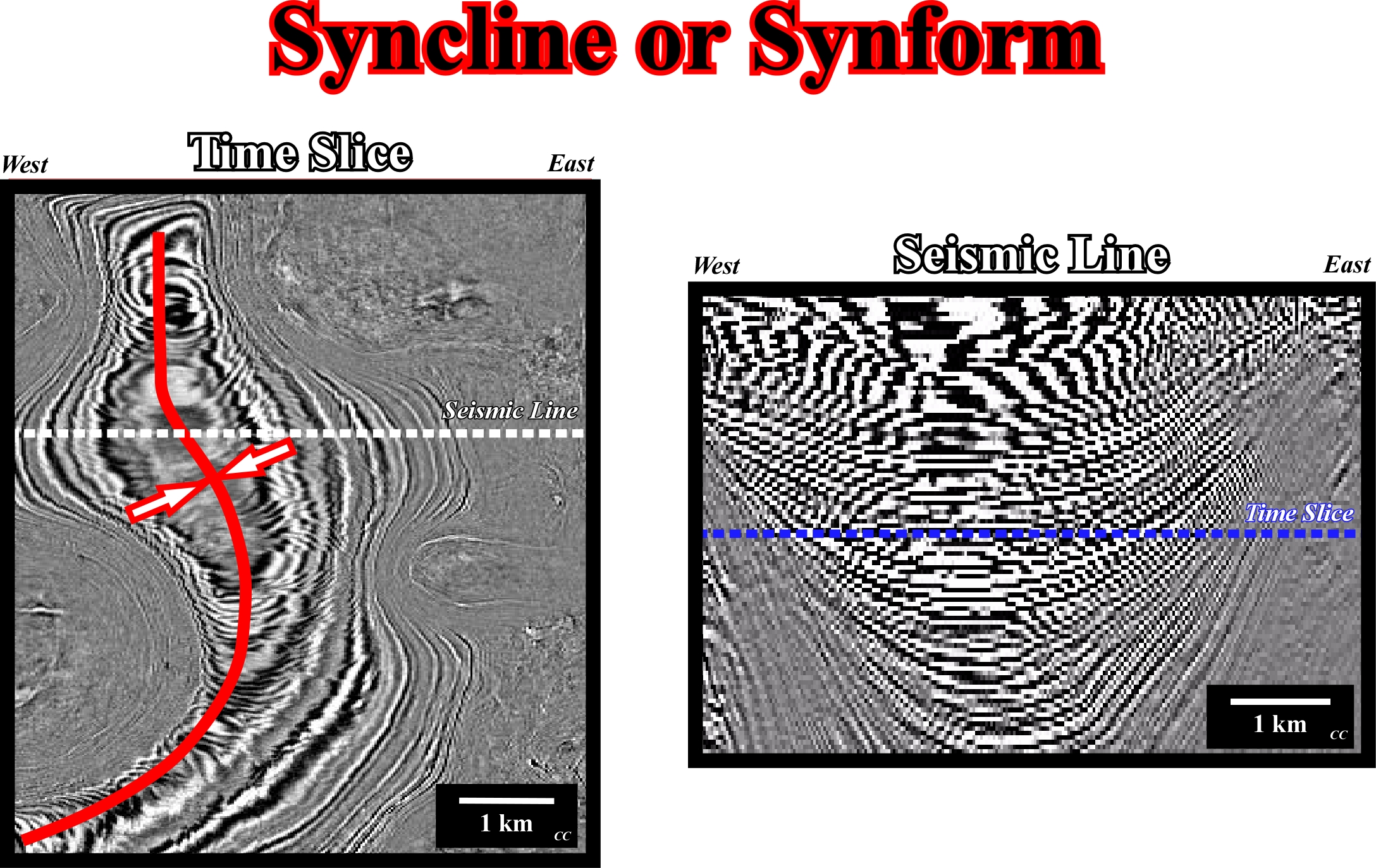
Fig. 333 - A synform structure with a curvilinear geometry is, easily, recognized on the time slice. It is corroborated by the seismic line , which crosses through it at its width. In fact, the time slice strongly suggests the synform disappear northward and becomes quite tight southward.
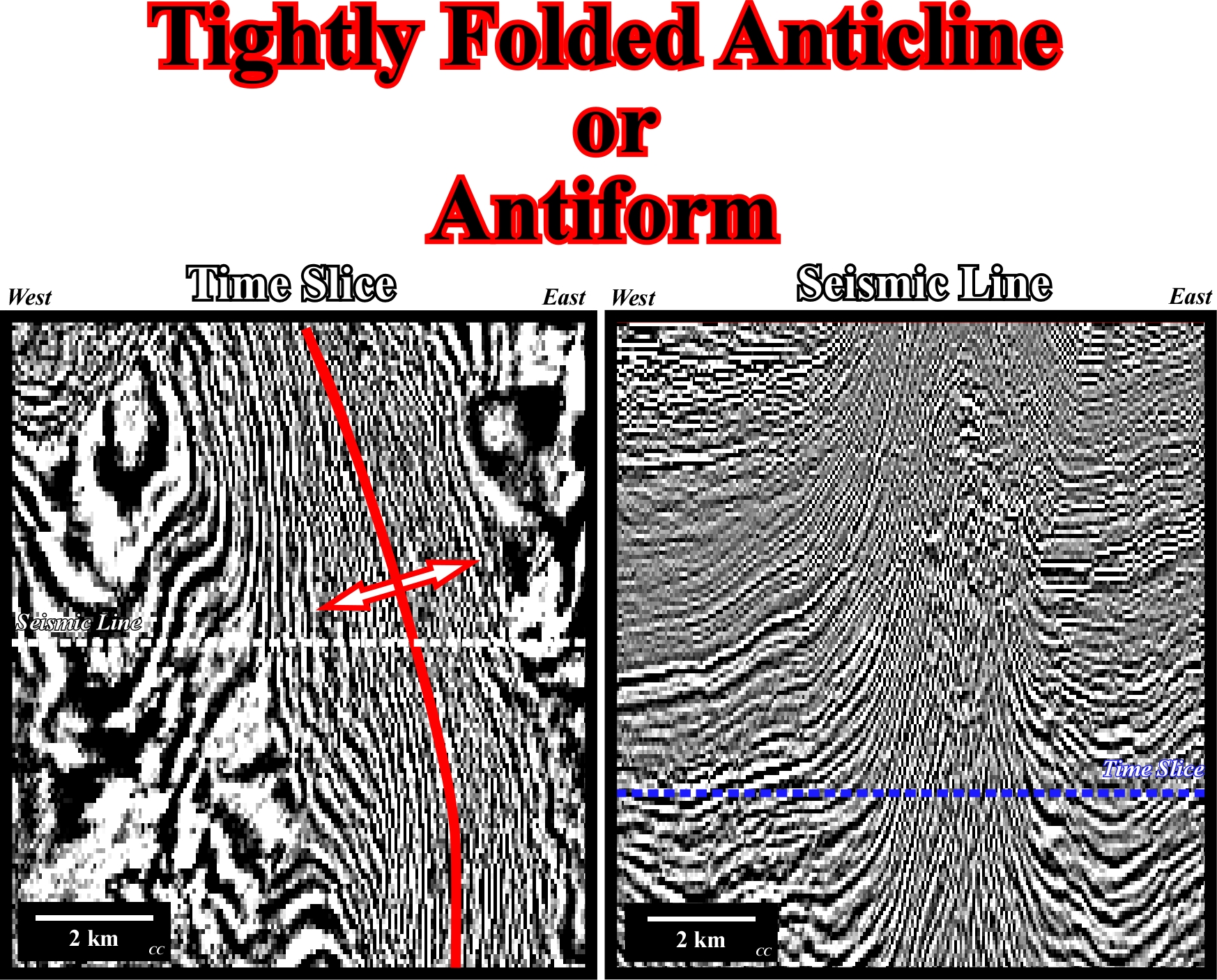
Fig. 334 - Time slice suggests an asymmetric antiform structure striking, roughly, North-South with asymmetric flanks. In fact, the seismic horizons in the eastern flank are much more tight than those of the western flank. Similarly, the width of the associated synforms on each side of the antiform axis is, quite, different. The eastern synform is much more tight that the western. Small normal faults are recognized in both synform. The seismic line corroborates such conjectures, but just locally, along its trace on the time slice (white dotted line). Only the time slice has areal information.
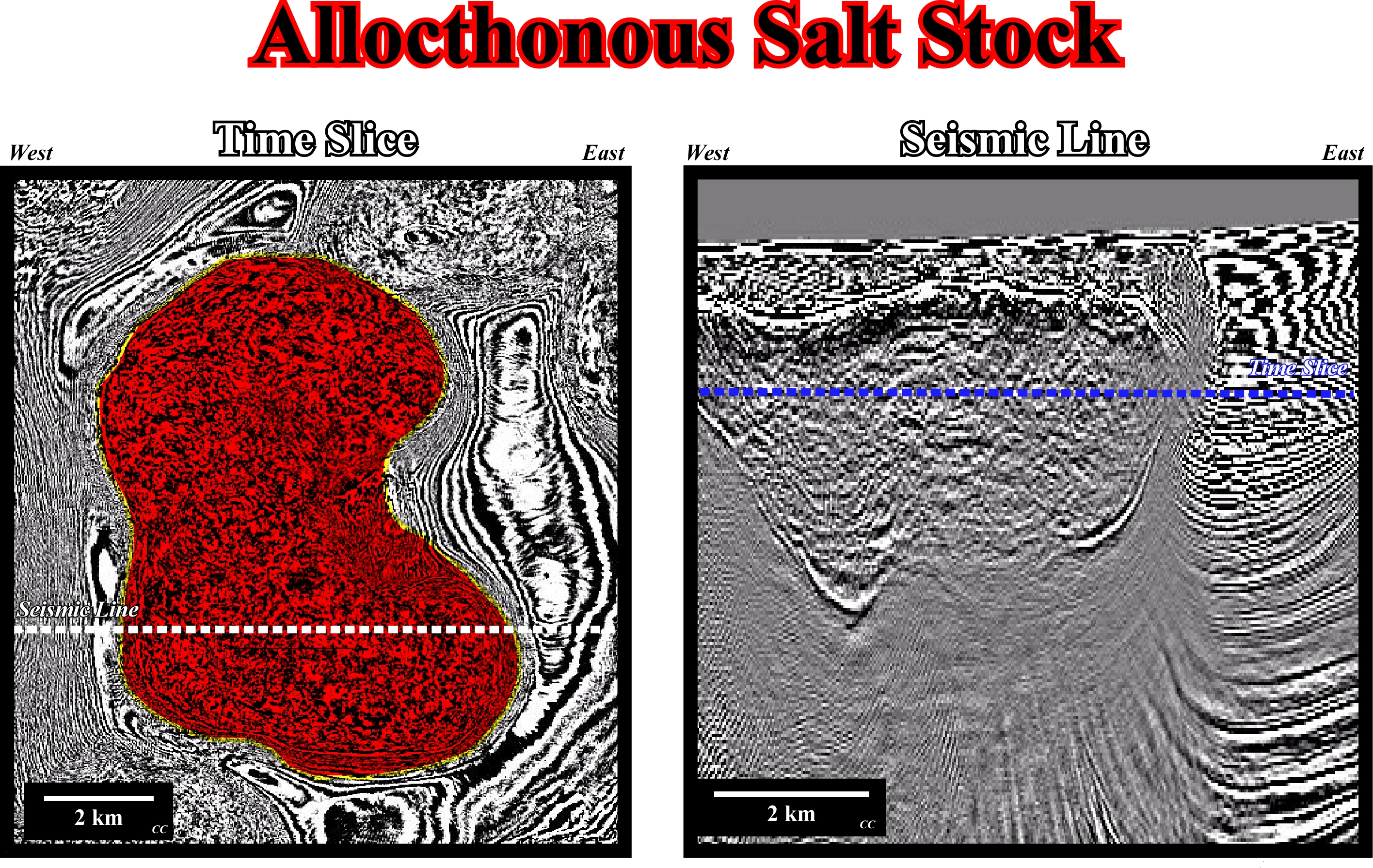
Fig. 335 - The geometry of the detached salt stock, recognized on the seismic line (just seismic lines give time informations in depth), which is, easily visualized, on the time slice, suggests that it seems to correspond to the coalescence of two detached salt stocks. In fact, the geometry of the synforms around it are quite different. The eastern synform being more width favours the hypothesis of a coalescence of two detached salt stocks. The seismic line crossing this allochthonous salt structure in the southern part cannot corroborate the coalescence hypothesis. In fact, it suggests only one secondary (vertical) salt weld.
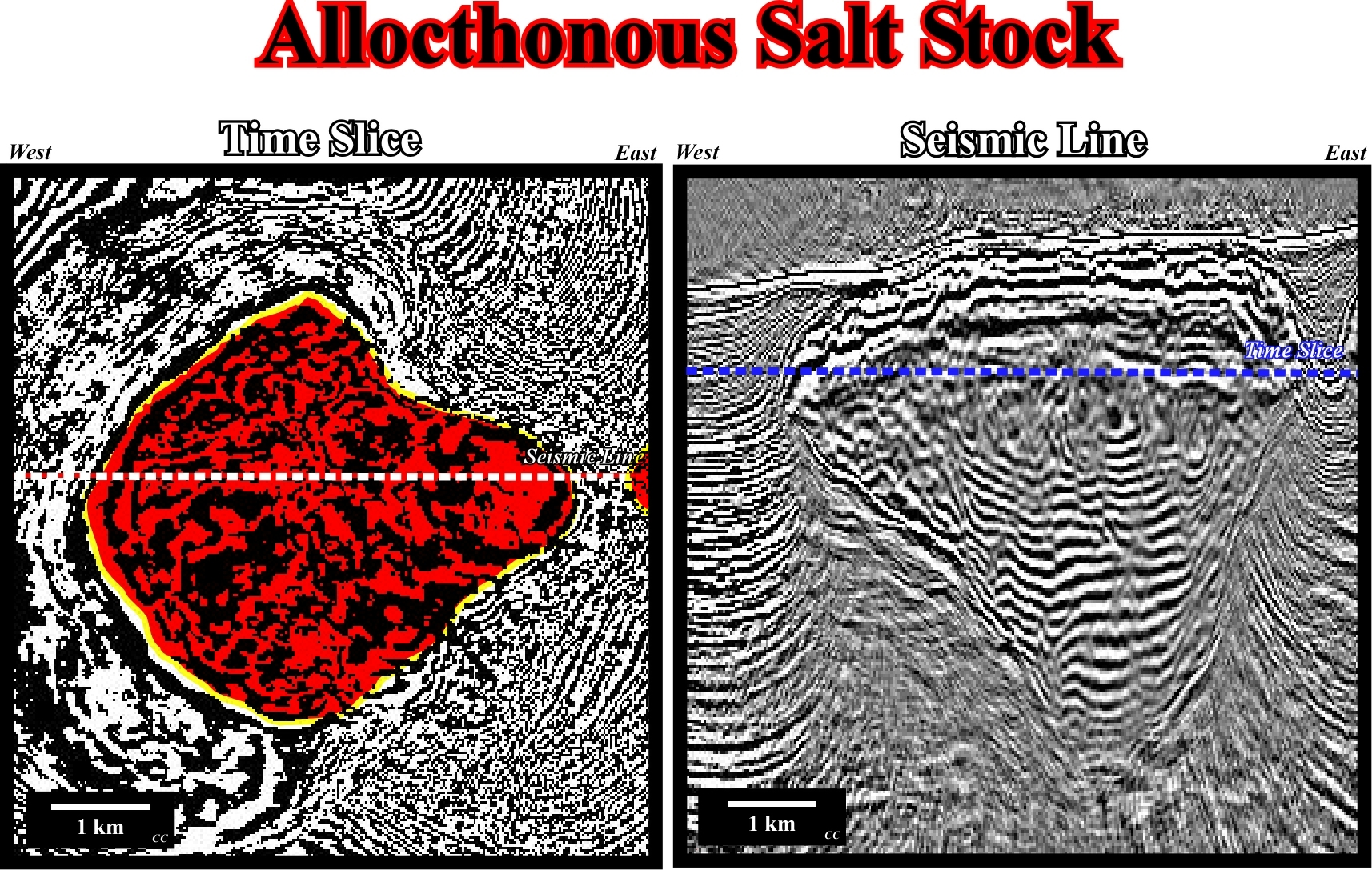
Fig. 336 - The cartography of this allochthonous salt structure, recognized on the seismic lime as an evident detached salt stock (its conic geometry in depth favours the presence of a secondary salt weld below it), show two quite different behaviours of the surrounding sediments. The western surrounding sediments are sub-horizontal and almost not deformed, while those of the eastern flanks are quite affected by the present of another allochthonous salt structure not too far.
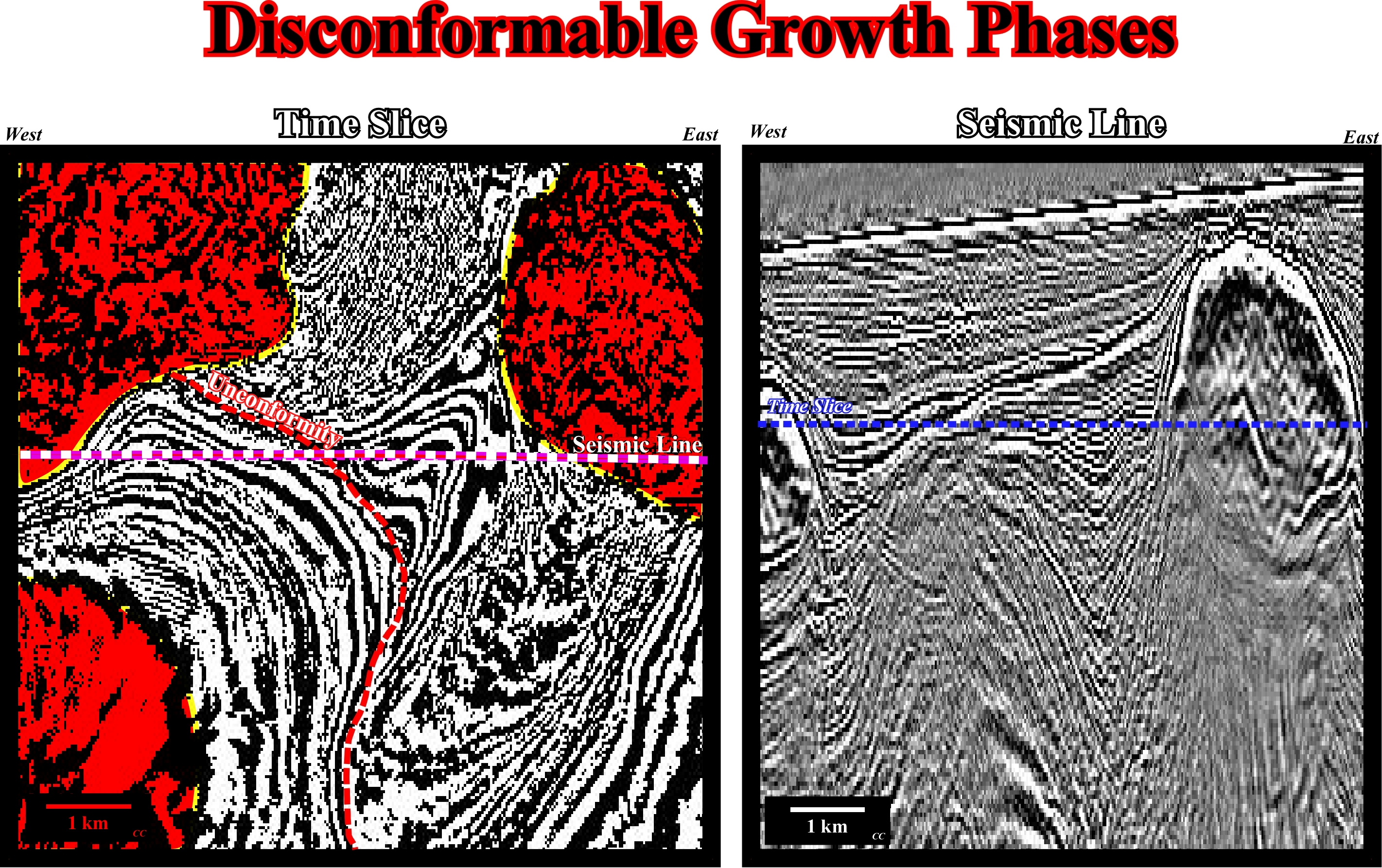
Fig. 337 - The time slice suggests three salt allochthonous structure, probably, detached salt stocks taking into account the seismic line informations and an onlapping seismic surface (red dotted line), which highlights an unconformity, i.e., a relative sea level fall. In fact, the sediments surrounding the southern salt structure onlap the western dipping red unconformity, which is, easily, recognized on the seismic line (between the two salt bodies). On the time slice, the seismic reflectors located westward of the unconformity (red dotted line) pre-date the erosional surface, while whose located westward of the unconformity post-date the erosional surface created by the relative sea level fall that induced the unconformity.
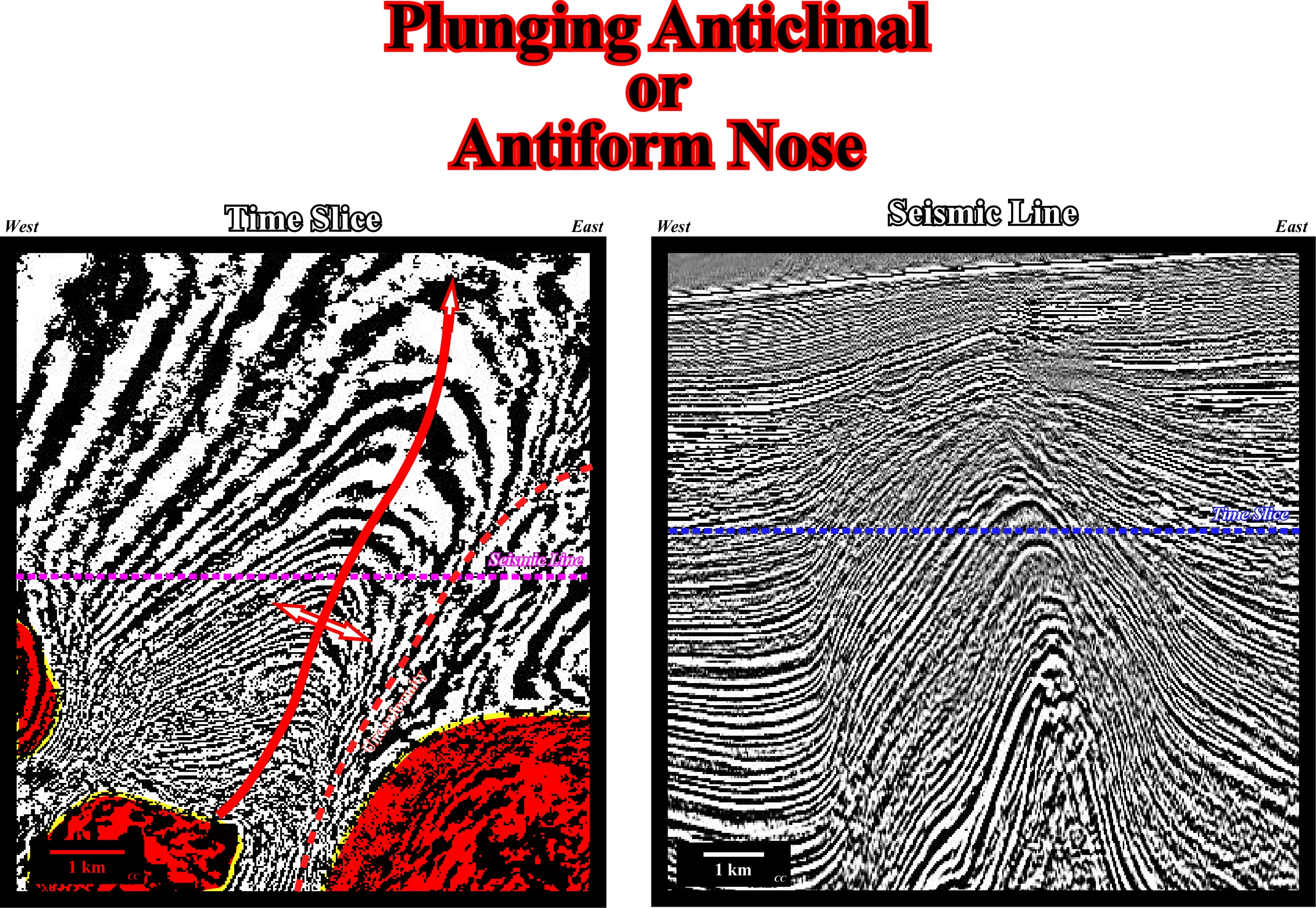
Fig. 338 - Three salt allochthonous salt structure are clearly recognized on the time slice, as well as, an antiform of the overburden and a tilted tectonically enhanced unconformity (angular unconformity). The axial plane of the antiform strikes, roughly, NE-SW. The hinge line (where the limbs of the fold meet or the line of maximum curvature) plunges away from the culmination point, located near the central salt body. In other words, the hinge line, which seems to disappear northward, is concave upward. The overburden sediments overlying the unconformity, i.e., the erosional surface induced by the relative sea level fall, are visible northward of the western salt body, while those pre-dating the unconformity are visible westward of the trace of the unconformity (red dotted line).
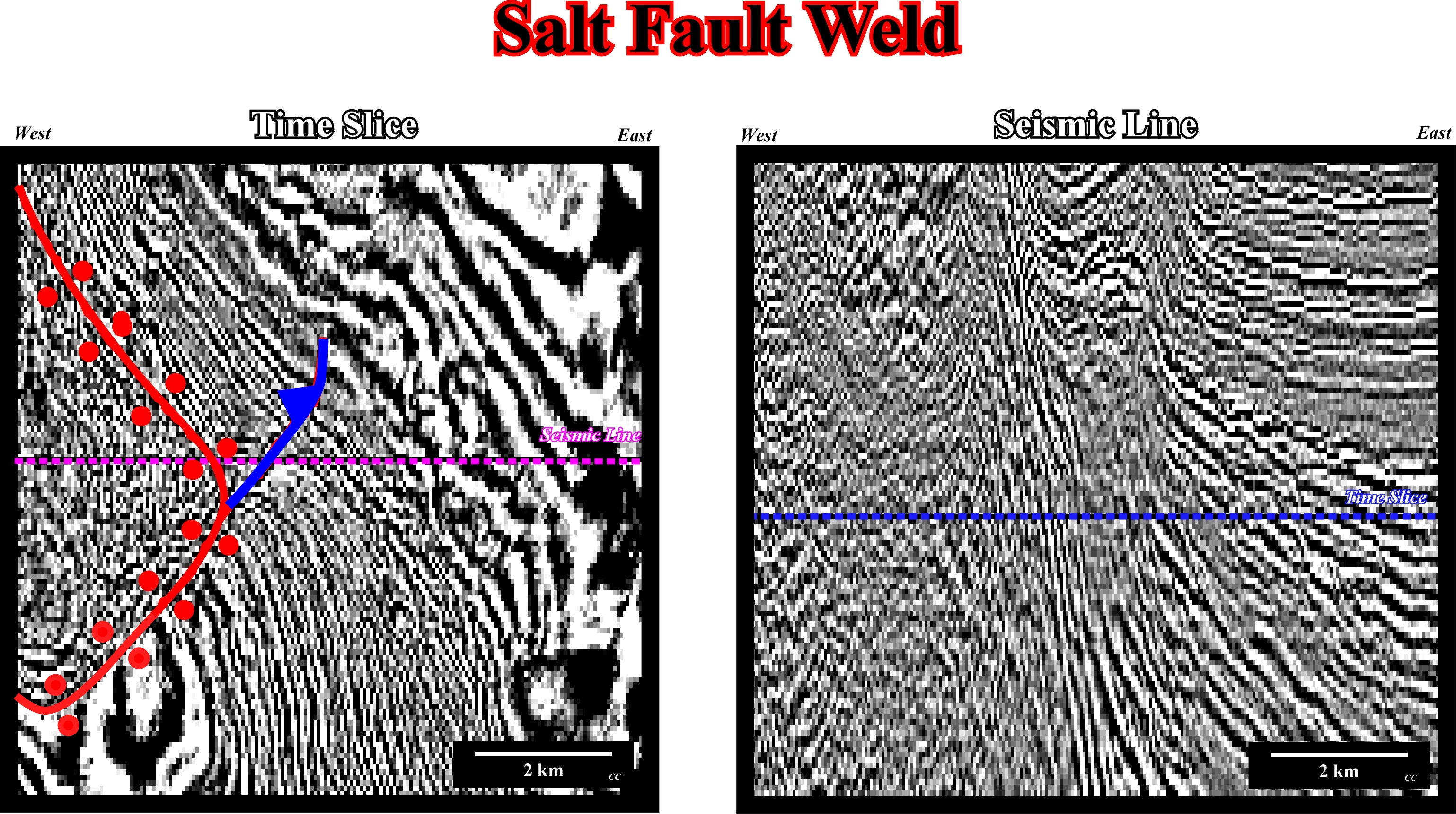
Fig. 339 - A curvilinear salt weld (surface or fault zone joining strata originally separated by autochthonous or allochthonous salt) along which significant slip or shear, probably, took place, can be recognized on this time slice, that is to say, that it can be considered as a fault weld. In fact, the juxtaposed seismic reflectors are discordant and show different tectonic behaviour. The eastern seismic reflectors are structurally higher. A reverse fault rooted on the fault weld is, also, recognizable on the time-slice. The fault weld is evident on the seismic line, as well as the reverse fault that looks to matches with the eastern flank of a small salt drop, which is also called detached salt stock.
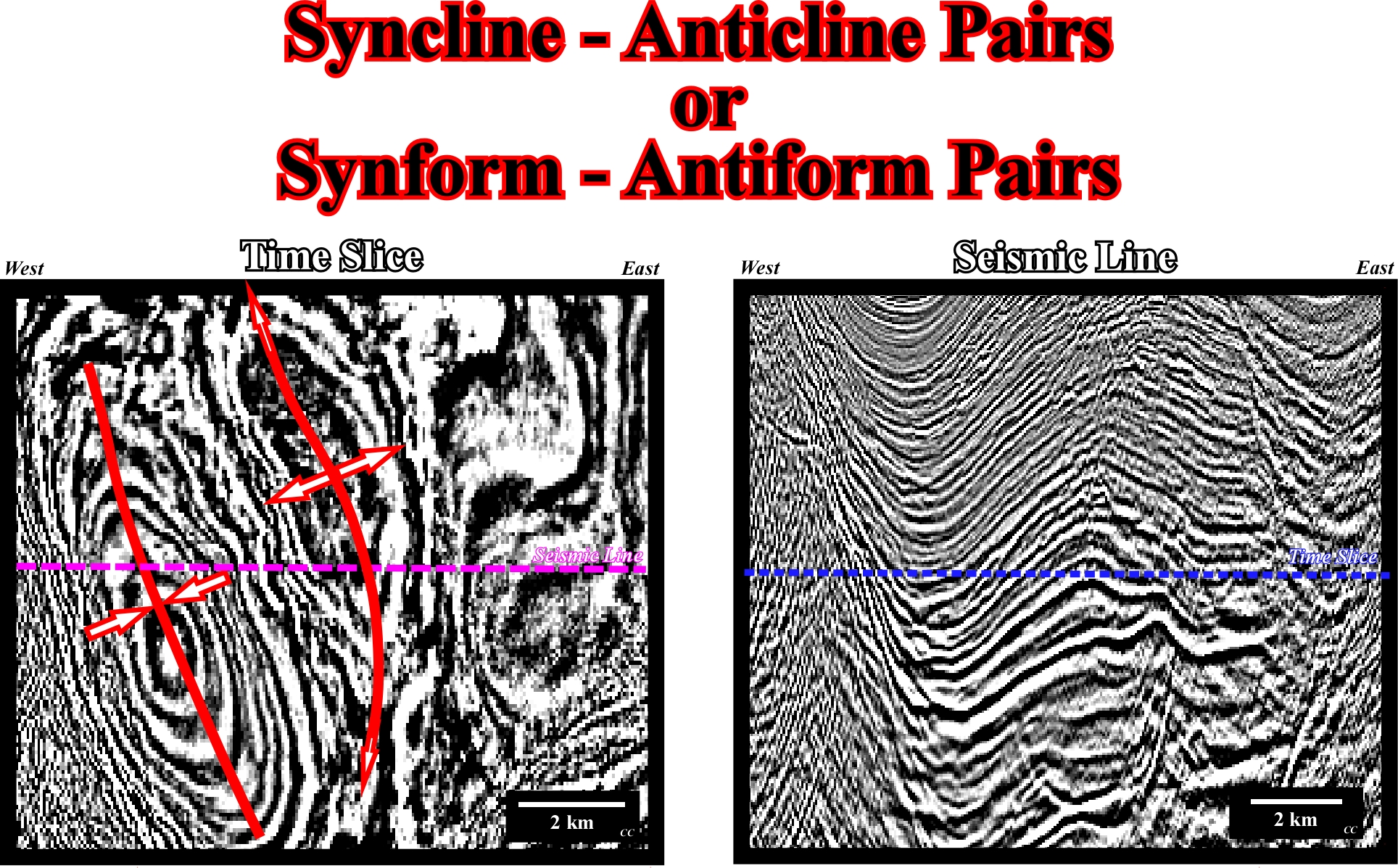
Fig. 340 - Knowing the stratigraphic column, a geological map (with or without topography): (i) An antiform structure, independently of its origin (shorting or lengthening), can be recognized since the older layers are located in central part, near the hinge line ; (ii) An synform structure is, also easily, recognized because the younger layers are located in the core of the structure ; (ii) The dip of flanks of an antiform, contrariwise to that of flanks of a synform, decreases in depth, it is easy to differentiate antiforms from synforms, using two consecutive time-slices not too far apart. On this time slice the western structure is considered a synform because in the above time slice (200 milliseconds higher) the spacing between the chronostratigraphic lies is higher, which means that the dip is slightly smaller. The opposite happens to anticline structure. The seismic section corroborates these opposite pattern a well as the dipping evolution.
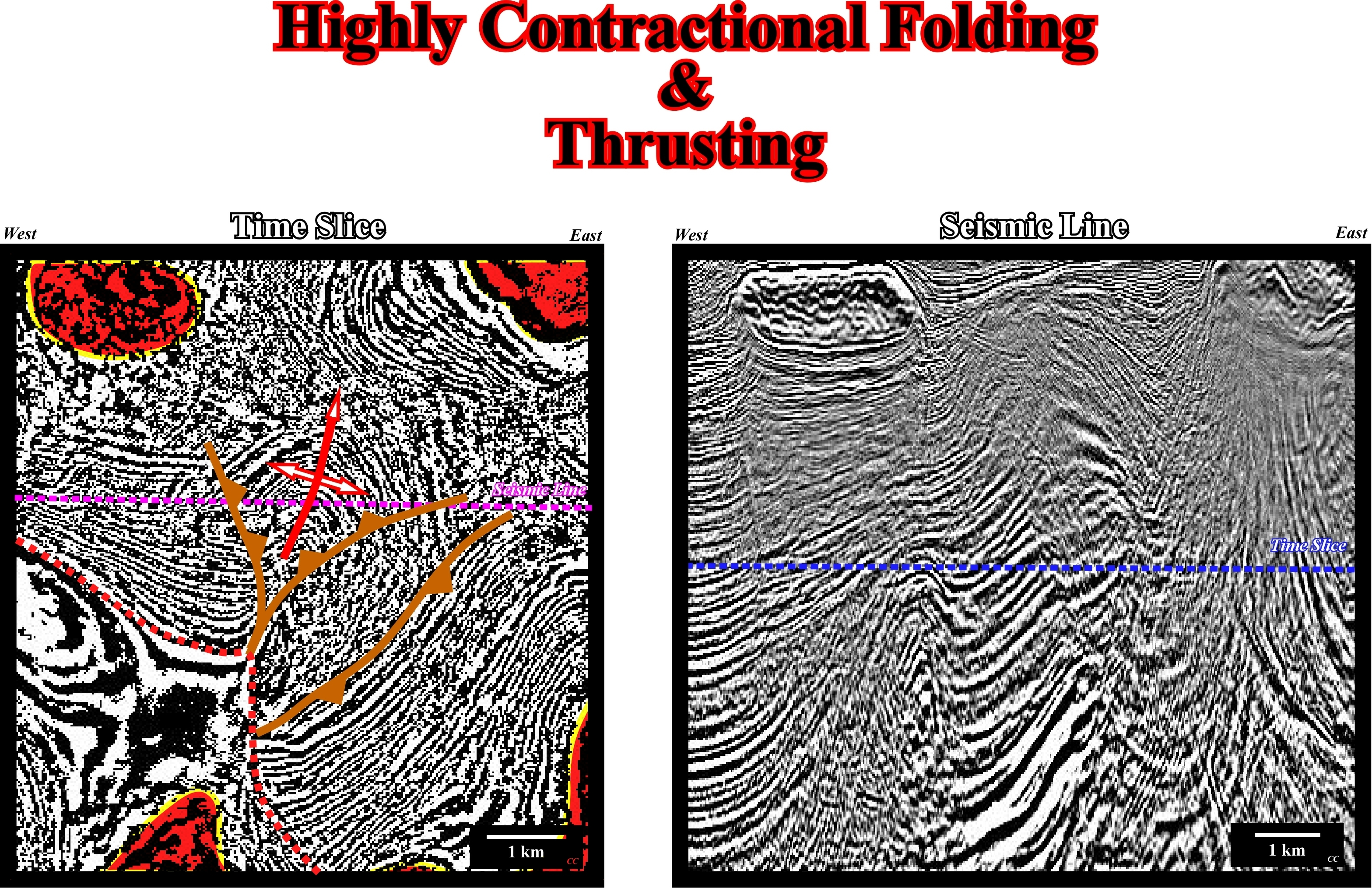
Fig. 341 - In the middle of four allochthonous salt bodies, probably, detached salt domes or salt stocks, an anticline structure flanked by reverse faults is visible in central area of this time slice, between two synform structures. Most likely, the anticline structure, which seems be located over a salt structure, is the result of the reactivation of an old extensional antiform, by a compressional tectonic regime, during which the with original normal faults were reactivated as reverse faults. Such hypothesis is corroborated by the seismic line, in which detached salt stocks and deep salt induced reverse faults, which can be considered as fault welds are easily recognized.
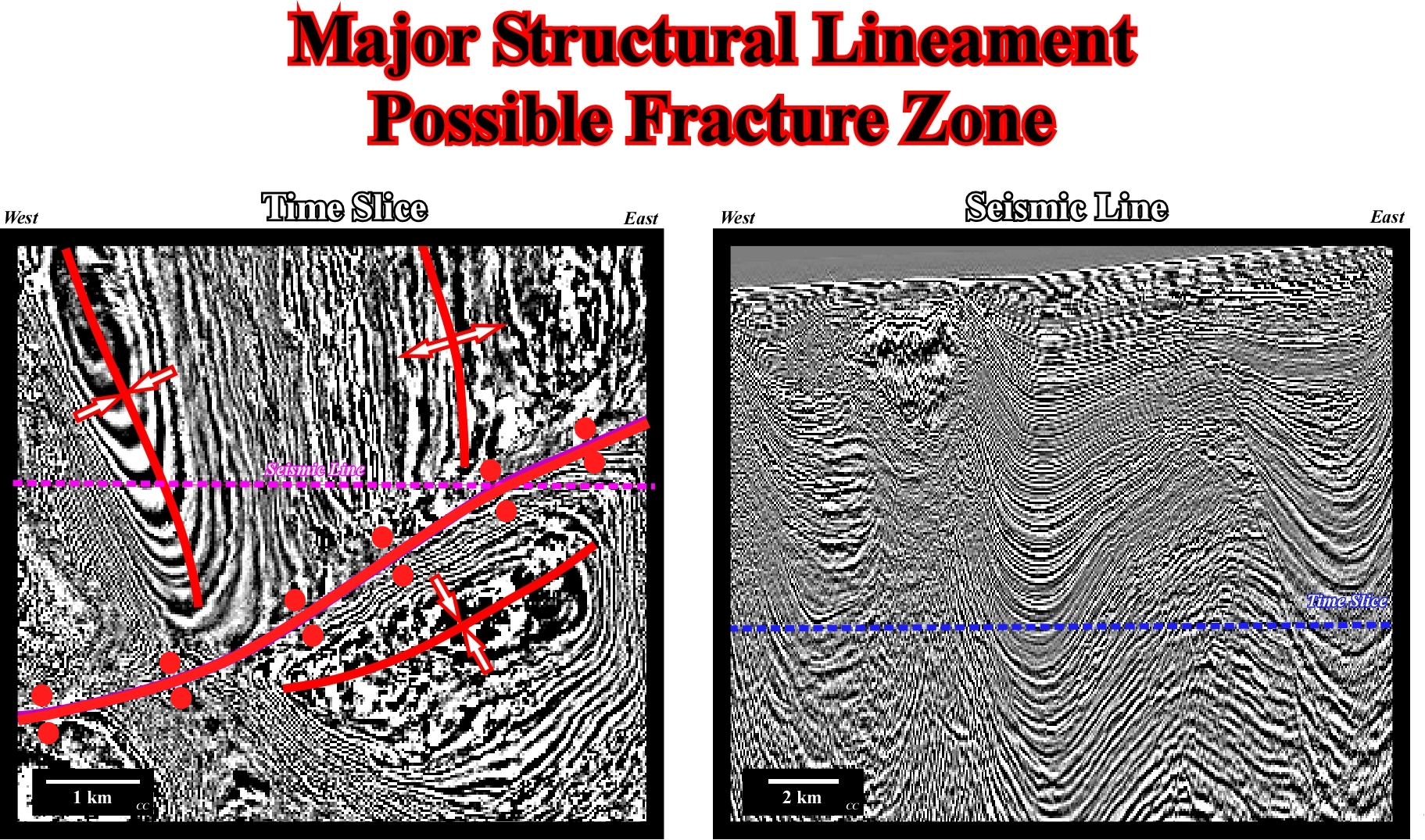
Fig. 342 - On the upper part of this time slices an antiform and a synform structure, striking, more or less, North-South, are, easily, recognized on this time slice. They are corroborate by shallower time slices (remember the dip of flanks of an antiform, contrariwise to that of flanks of a synform, decreases in depth). A quite nice SW-NE secondary salt weld crosses the time slice, individualizing two different tectonic compartment. In the northern compartment the salt induced structures strike, roughly, North-South, while those located in southern compartment strike, more or less, West-East. In fact, the large synform, recognized in the southern compartment, is concordant with the salt weld. These conjectures are not falsified by the seismic line (purple dotted line) crossing the time-slice, particularly, the secondary salt weld, which detached from the mother salt rock the non longer connected superficial salt plug.
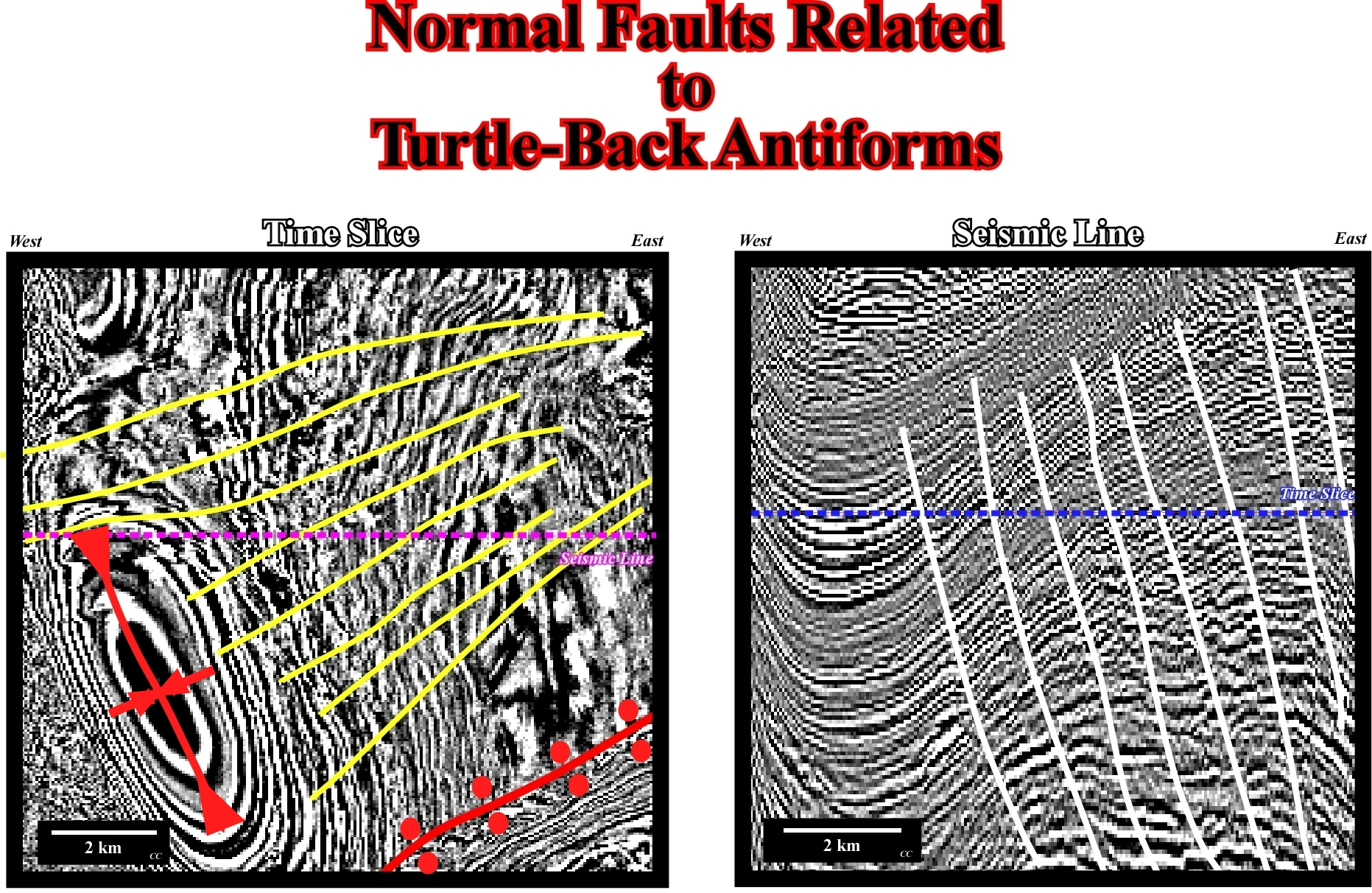
Fig. 343 - On this time slice an salt weld limits two tectonic compartments in which the salt induced structures have different strikes. In the upper compartment a synform structure oriented, roughly, North-South, is recognized without difficulty, knowing that on shallower time slices the width of the structure is smaller and the dip of the flanks higher. On the eastern flank, a normal faulting system (fault planes in yellow), coeval of the overburden deformation, and slightly convergent toward the apex of the eastern antiform, which axis is not reached on this time slice, can be readily recognized a mapped. The illustrated seismic line does not falsify the advanced conjectures and it, strongly, suggests, taking into account the tectonic inversion of the overburden, that the antiform structure corresponds to a turte-back structure of which just the west flank is visible.
to continue press
next